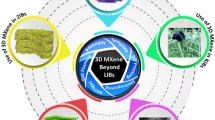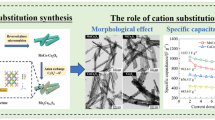Abstract
TiO2 can be integrated with antimony-doped tin oxide to obtain composite materials with high electroconductivity. Based on this, spherical TiO2@Sb–SnO2 (TSS) has been prepared by homogeneous precipitation combined with a high-temperature calcination process. The morphology, structure and composition of TSS were characterized by scanning electron microscope, Brunauer–Emmet–Teller surface area analyzer, X-ray diffractometer and transmission electron microscope with energy-dispersive X-ray spectrometer, respectively. Effects of dropping conditions, introducing sulfate, pH value, calcination temperature and holding time on the conductivity of TSS were investigated by measuring resistivity, Zeta potential and particle size, meanwhile the calcination action and conductive mechanism by thermogravimetric analysis, X-ray photoelectron spectroscopy and electron spin resonance. The results revealed that the core–shell structured TSS was formed, and the resistivity of composite powder was below 4.0 Ω cm under the optimum conditions. Our analysis indicates that the conductive channel mechanism is the main conductive mechanism of the as-prepared composite.












Similar content being viewed by others
References
Purbia R, Paria S (2015) Yolk/shell nanoparticles: classifications, synthesis, properties, and applications. Nanoscale 7:19789–19873
Bayal N, Jeevanandam P (2012) Synthesis of CuO@NiO core-shell nanoparticles by homogeneous precipitation method. J Alloy Compd 537:232–241
Kusiora A, Zycha L, Zakrzewskab K, Radecka M (2019) Photocatalytic activity of TiO2/SnO2 nanostructures with controlled dimensionality/complexity. Appl Surf Sci 471:973–985
Jia B, Cao P, Zhang H, Wang G (2019) Mesoporous amorphous TiO2 shell-coated ZIF-8 as an efficient and recyclable catalyst for transesterification to synthesize diphenyl carbonate. J Mater Sci 54:9466–9477. https://doi.org/10.1007/s10853-019-03595-5
Yang S, Huang Y, Han G, Liu J, Cao Y (2017) Synthesis and electrochemical performance of double shell SnO2@amorphous TiO2 spheres for lithium ion battery application. Powder Technol 322:84–91
Zhang Q, Zhang W, Peng K (2019) In-situ synthesis and magnetic properties of core-shell structured Fe/Fe3O4 composites. J Magn Magn Mater 484:418–423
Zheng C, Wang Y, Phua SZF, Lim WQ, Zhao Y (2017) ZnO-DOX@ZIF-8 core–shell nanoparticles for pH-responsive drug delivery. ACS Biomater Sci Eng 3:2223–2229
Zhang S, Chen S, Yang F et al (2019) High-performance electrochromic device based on novel polyaniline nanofibers wrapped antimony-doped tin oxide/TiO2 nanorods. Org Electron 65:341–348
Li N, Li Y, Li W, Ji S, Jin P (2016) One-Step hydrothermal synthesis of TiO2@MoO3 core–shell nanomaterial: Microstructure, growth mechanism, and improved photochromic property. J Phys Chem C 120:3341–3349
Du Y, Yan J, Meng Q, Wang J, Dai H (2012) Fabrication and excellent conductive performance of antimony-doped tin oxide-coated diatomite with porous structure. Mater Chem Phys 133:907–912
Hu Y, Zhong H, Wang Y, Lu L, Yang H (2018) TiO2/antimony-doped tin oxide: Highly water-dispersed nano composites with excellent IR insulation and super-hydrophilic property. Sol Energy Mater Solar Cells 174:499–508
Zhao N, He C, Liu J et al (2014) Dependence of catalytic properties of Al/Fe2O3 thermites on morphology of Fe2O3 particles in combustion reactions. J Solid State Chem 219:67–73
Li YQ, Mei SG, Byon YJ, Wang JL, Zhang GL (2013) Highly solar radiation reflective Cr2O3–3TiO2 orange nanopigment prepared by a polymer-pyrolysis method. ACS Sustain Chem Eng 2:318–321
Hu P, Yang H, Ouyang J (2012) Synthesis and characterization of Sb-SnO2/kaolinites nanoparticles. Appl Clay Sci 55:151–157
Wang LS, Lu HF, Hong RY, Feng WG (2012) Synthesis and electrical resistivity analysis of ATO-coated talc. Powder Technol 224:124–128
Hu Y, Zhang H, Yang H (2008) Synthesis and electrical property of antimony-doped tin oxide powders with barite matrix. J Alloy Compd 453:292–297
Li X, Qian JH, Xu JS, Sun YD, Liu L (2019) Synthesis and electrical properties of antimony-doped tin oxide-coated TiO2 by polymeric precursor method. Mat Sci Semicon Proc 98:70–76
Yu H, Chen F, Ye L, Zhou H, Zhao T (2019) Enhanced photocatalytic degradation of norfloxacin under visible light by immobilized and modified In2O3/TiO2 photocatalyst facilely synthesized by a novel polymeric precursor method. J Mater Sci 54:10191–10203. https://doi.org/10.1007/s10853-019-03636-z
Sladkevich S, Kyi N, Gun J, Prikhodchenko P, Ischuk S, Lev O (2011) Antimony doped tin oxide coating of muscovite clays by the Pechini route. Thin Solid Films 520:152–158
Liu H, Zhang J, Gou J, Sun Y (2017) Preparation of Fe2O3/Al composite powders by homogeneous precipitation method. Adv Powder Technol 28:3241–3246
Montañez MK, Molina R, Moreno S (2014) Nickel catalysts obtained from hydrotalcites by coprecipitation and urea hydrolysis for hydrogen production. Int J Hydrogen Energ 39:8225–8237
Villegas M, Sierra T, Caballero AC, Fernandez JF (2007) Ti-based nanocoatings on Al2O3 powders. Ceram Int 33:875–878
Yang Z, Qi Y, Zhang J (2019) A novel perspective for reflective cooling composites: influence of the difference between the effective refractive index of polymeric matrix and inorganic functional particles. Constr Build Mater 223:928–938
Schwindt N, Pidoll U, Markus D, Klausmeyer U, Papalexandris MV, Grosshans H (2017) Measurement of electrostatic charging during pneumatic conveying of powders. J Loss Prev Proc 49:461–471
Wang C, Wang D, Yang R, Wang H (2019) Preparation and electrical properties of wollastonite coated with antimony-doped tin oxide nanoparticles. Powder Technol 342:397–403
Li X, Qian JH, Xu JS, Xing JJ, Tao E (2018) Synthesis, characterization and electrical properties of TiO2 modified with SiO2 and antimony-doped tin oxide. J Mater Sci Mater El 29:12100–12108
Heller A, Jarvis K, Coffman SS (2018) Association of type 2 diabetes with submicron titanium dioxide crystals in the pancreas. Chem Res Toxicol 31:506–509
Wang Y, Jamal R, Wang M, Yang L, Liu F, Abdiryim T (2017) A donor-acceptor-donor-type conjugated polymer-modified TiO2 with enhanced photocatalytic activity under simulated sunlight and natural sunlight. J Mater Sci 52:4820–4832. https://doi.org/10.1007/s10853-016-0717-7
Redmond PL, Hallock AJ, Brus LE (2005) Electrochemical ostwald ripening of colloidal Ag particles on conductive substrates. Nano Lett 5:131–135
Chung DDL (2001) Electromagnetic interference shielding effectiveness of carbon materials. Carbon 39:279–285
Flahaut E, Peigney A, Laurent C, Marlière C, Chastel F, Rousset A (2000) Carbon nanotube-metal-oxide nanocomposites: microstructure, electrical conductivity and mechanical properties. Acta Mater 48:3803–3812
Rockenberger J, Uz F, Tischer M, Tröger L (2000) Near edge X-ray absoption fine structure measurements and extended X-ray absorption fine structure measurements of the valence state and coordination of antimony in doped nanocrystalline SnO2. J Chem Phys 112:4292–4304
Siciliano P (2000) Preparation, characterisation and applications of thin films for gas sensors prepared by cheap chemical method. Sens Actuat B Chem 70:153–164
Sun K, Liu J, Browning ND (2002) Correlated atomic resolution microscopy and spectroscopy studies of Sn(Sb)O2 nanophase catalysts. J Catal 205:266–277
Tian BZ, Li CZ, Zhang JL (2012) One-step preparation, characterization and visible-light photocatalytic activity of Cr-doped TiO2 with anatase and rutile bicrystalline phases. Chem Eng J 191:402–409
Wan HC, Yao WT, Zhu WK, Tang Y, Ge HL, Shi XZ, Duan T (2018) Fe-N co-doped SiO2@TiO2 yolk–shell hollow nanospheres with enhanced visible light photocatalytic degradation. Appl Surf Sci 444:355–363
Li XY, Wu Y, Zhu W, Xue FQ, Qian Y, Wang CW (2016) Enhanced electrochemical oxidation of synthetic dyeing wastewater using SnO2–Sb-doped TiO2-coated granular activated carbon electrodes with high hydroxyl radical yields. Electrochim Acta 220:276–284
Ou G, Xu Y, Wen B et al (2018) Tuning defects in oxides at room temperature by lithium reduction. Nat Commun 9:1302–1310
Cui YH, Feng YJ, Liu ZQ (2009) Influence of rare earths doping on the structure and electro-catalytic performance of Ti/Sb–SnO2 electrodes. Electrochim Acta 54(21):4903–4909
Hu P, Yang H (2010) Controlled coating of antimony-doped tin oxide nanoparticles on kaolinite particles. Appl Clay Sci 48:368–374
Baena JPC, Agrios AG (2014) Transparent conducting aerogels of antimony-doped tin oxide. ACS Appl Mater Interfaces 6:19127–19134
Hek HD, Stol RJ, Bruyn PLD (1978) Hydrolysis-precipitation studies of aluminum(III) solutions. 3. The role of the sulfate ion. J Colloid Interf Sci 64:72–89
Colemana JP, Freeman JJ, Madhukar P, Wagenknecht JH (1999) Electrochromism of nanoparticulate-doped metal oxides: optical and material properties. Displays 20:145–154
Wen L, Sun X, Xiu Z, Chen S, Tsai C-T (2004) Synthesis of nanocrystalline yttria powder and fabrication of transparent YAG ceramics. J Eur Ceram Soc 24:2681–2688
Lv Y, Zhang W, Liu H, Sang Y, Qin H, Tan J, Tong L (2012) Synthesis of nano-sized and highly sinterable Nd:YAG powders by the urea homogeneous precipitation method. Powder Technol 217:140–147
Tan J, Shen L, Fu X, Hou W, Chen X (2004) Preparation of nanometer-sized (1−x)SnO2·xSb2O3 conductive pigment powders and the hydrolysis behavior of urea. Dyes Pigm 61:31–38
Huo W, Zhang X, Gan K, Chen Y, Xu J, Yang J (2019) Effect of zeta potential on properties of foamed colloidal suspension. J Eur Ceram Soc 39:574–583
Beliatis MJ, Martin NA, Leming EJ, Silva SRP, Henley SJ (2011) Laser ablation direct writing of metal nanoparticles for hydrogen and humidity sensors. Langmuir 27:1241–1244
Yanagi K, Udoguchi H, Sagitani S et al (2010) Transport mechanisms in metallic and semiconducting single-wall carbon nanotube networks. ACS Nano 4:4027–4032
Peng Q, Kalanyan B, Hoertz PG et al (2013) Solution-processed, antimony-doped tin oxide colloid films enable high-performance TiO2 photoanodes for water splitting. Nano Lett 13:1481–1488
Acknowledgements
This work was financially supported by National Natural Science Foundation of China (No. 21878024) and Innovation Team Project of Liaoning Province (Nos. LT2015001 and 2018479-14).
Author information
Authors and Affiliations
Corresponding author
Additional information
Publisher's Note
Springer Nature remains neutral with regard to jurisdictional claims in published maps and institutional affiliations.
Electronic supplementary material
Below is the link to the electronic supplementary material.
Rights and permissions
About this article
Cite this article
Wang, Y., Qian, J., Xing, J. et al. Fabrication of core–shell structured TiO2@Sb–SnO2 with improved electroconductivity. J Mater Sci 55, 3871–3883 (2020). https://doi.org/10.1007/s10853-019-04229-6
Received:
Accepted:
Published:
Issue Date:
DOI: https://doi.org/10.1007/s10853-019-04229-6




